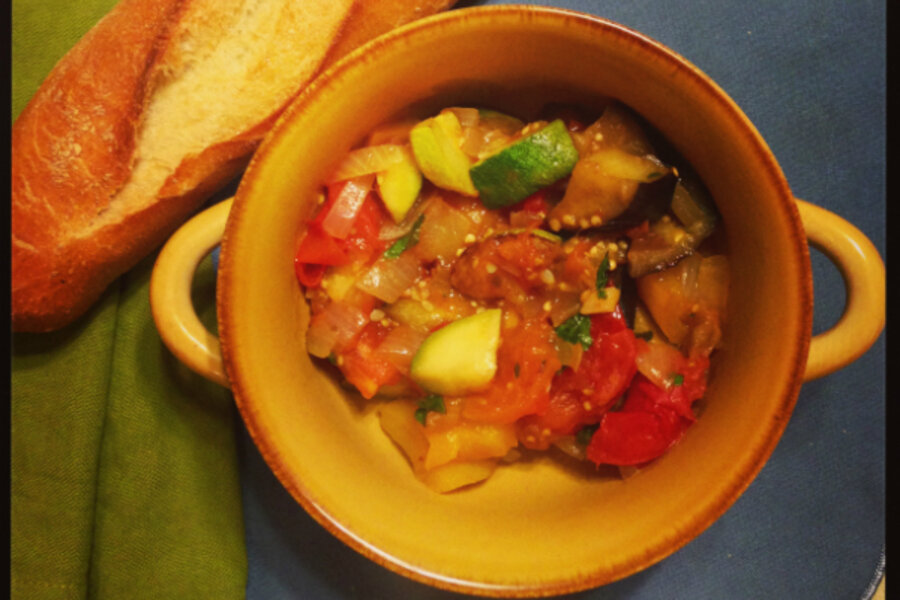Rustic ratatouille
Loading...
With August’s arrival comes the abundance of fresh tomatoes. A slow-simmered dish like ratatouille is a delicious use of right-off-the-vine tomatoes and should be part of your summer’s repertoire.
Ratatouille, which comes from the French word "touiller,” meaning “to toss,” is literally a tossing in a pot of summer vegetables and simmering them in olive oil: tomatoes, eggplant, zucchini, bell peppers, onion, and seasoned with fresh garlic, basil, and perhaps a bay leaf. There are many varieties of ratatouille. There is the Disney version, made popular by the Pixar film “Ratatouille”; Julia Child sautées the vegetables separately; Alice Waters creates a “basil bouquet” bound with kitchen twine to enhance the flavors of the vegetables as they cook.
Whatever approach is your preference, I find great comfort in the fact that ratatouille, which originated in the French region surrounding Nice, was originally a peasant or farmer’s dish. I can imagine a farmer arriving home after toiling all day in the fields wanting a quick and hearty meal. I feel like this after a hard days’ work, too – the last thing I want to do is sweat it out in the kitchen. Just give me something hot, good, and fast. With ratatouille I can rely on the natural good flavors of fresh in-season vegetables and be content with its simplicity.
When I was down on the Cape recently visiting my mom, I was rooting around in her refrigerator and found that she had all the makings of ratatouille. She loves a good dish of ratatouille, too, so she got right to work assembling all the vegetables in one big pot. Lunch that day was a steaming bowl of summer's bounty swimming in delicious tomato sauce, which we sopped up with warm, crusty French bread. A welcome treat after a morning of household chores.
It was so good, I wanted to make some for myself when I got home. I didn’t follow a recipe, but this came out just as tasty and satisfying. You can serve it as a side, or with rice or crusty bread for your main meal.
Rustic ratatouille
Serves 4 to 6
2-4 tablespoons olive oil, divided
1 medium onion, sliced
2 gloves garlic, diced
3-4 tomatoes, chopped in quarters
1 bell pepper (red, yellow, or green) cored and sliced
1 eggplant, sliced into 1-inch discs and quartered
1 zucchini, sliced into coins
1/4 cup fresh basil, chopped
1 bay leaf
Salt and pepper, to taste
1. Preheat oven to 350 degrees F.
2. In a large pot like a Dutch oven heat 1-2 tablespoons of the olive oil and add the onion and garlic. Sautée until the onion becomes translucent. Add the tomatoes and bell pepper and simmer while you cook the eggplant and zucchini.
3. In a separate sauce pan, add the remaining olive oil and heat. Add the eggplant and zucchini and sautée until the vegetables become tender.
4. Add the eggplant and zucchini to the onion, tomato, pepper mixture and stir to combine. Add the fresh basil, bay leaf, salt, and pepper.
5. Cover and set in the oven for about 10 minutes to let the flavors combine.
Serve with crusty bread and maybe a sprinkling of Parmesan cheese.






